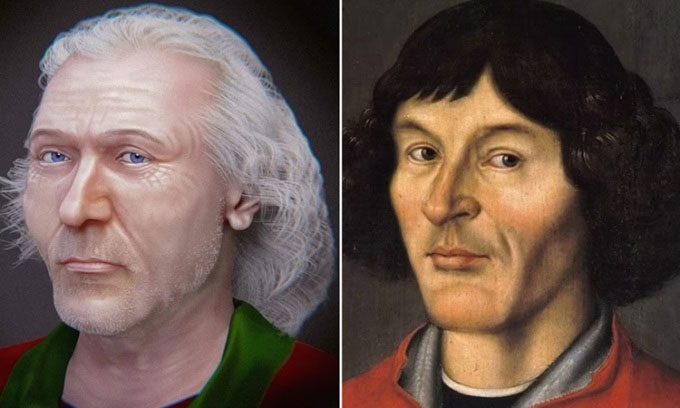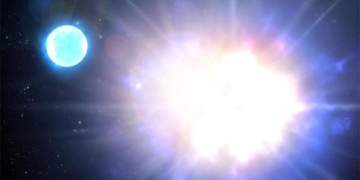For the first time in over 400 years, researchers have been able to reconstruct the face of the father of the heliocentric theory based on a skull found in Poland.
Nicolaus Copernicus, the Polish astronomer born in 1473, revolutionized our understanding of the planets by asserting that the Earth revolves around the Sun. Scientists have recreated Copernicus’s face more than 400 years after his only known self-portrait was destroyed in a fire in 1597. The new image reveals what the famous astronomer looked like at the age of 70 when he passed away in 1543, Mail reported on March 26.

Reconstructed face image (left) and posthumous portrait of Copernicus (right). (Photo: Cicero Moraes).
The face of Copernicus has long been one of the mysteries in the history of science. He was the first to propose the heliocentric model, placing the Sun at the center of the solar system. At the time, this hypothesis contradicted the teachings of the Roman Catholic Church, and Copernicus’s works were banned after his death. Despite his fame, all surviving portraits of Copernicus were created after his death, based on a long-lost self-portrait. As a result, no one can say for certain whether Copernicus actually resembled those paintings.
“One issue with historical figures is determining whether the surviving portraits accurately depict the real person. In Copernicus’s case, as far as I know, there are no intact portraits painted while he was alive,” said Cicero Moraes, the author of the new study.
To explore the mystery from 400 years ago, Moraes digitally reconstructed a face based on a skull believed to belong to Copernicus. Researchers discovered the remains in 2005 beneath the Frombork Church in Poland, where Copernicus lived, worked, and died. Due to the absence of a jawbone, Moraes initially used CT scan data to recreate a complete skull. “After finishing the skull reconstruction, I proceeded to estimate the face, including using data from measurements taken on living individuals to derive a face compatible with the skull,” Moraes explained.
Notably, the digital reconstruction closely matches one of the most famous portraits of Copernicus. Both depict a square jaw, high cheekbones, and a similar nose shape.
While archaeologists are nearly 100% certain that the skull belongs to Copernicus, many experts remain cautious. According to the archaeological team, a hair sample taken from a book believed to belong to Copernicus matches the DNA of the remains. However, the origins of the skull still raise questions among some specialists regarding whether it truly belonged to the renowned scientist. Moraes believes that his reconstructed image may help resolve the debate. The similarities between the reconstructed image and the portrait suggest that the accurate likeness and the skull both belong to Copernicus.


















































